This page explains everything you need to know about EPIRBs: how they work, how much they cost, how they differ from Personal Location Beacons (PLBs) and how you can set one up.
EPIRB
Technology Overview
What is an EPIRB?
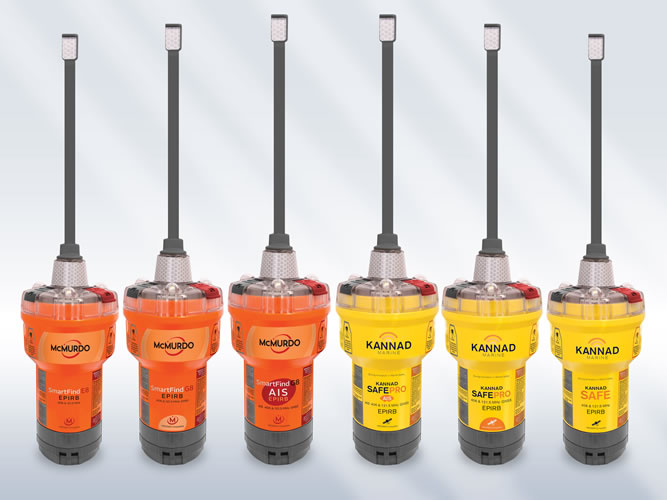
An Emergency Position Indicating Radio Beacon or EPIRB is used to alert search and rescue services in the event of an emergency. It does this by transmitting a coded message via the free to use, multinational Cospas Sarsat network. A 406 MHz distress frequency signal is sent via satellite and earth stations to the nearest rescue co-ordination centre.
EPIRBs also transmit a homing signal via 121.5 MHz to help rescue services to pinpoint the beacons location. Some EPIRBs also have built-in GNSS receivers which enables the rescue services to accurately locate your coordinates to +/- 50 metres. These receivers can be single source, typically using the US GPS, or multi-constellational, working with a number of GNSS satellite systems such as the EU’s Galileo or Russia’s Glonass offering greater global coverage, faster detection and more accurate location detection. Seas of Solutions offers an EPIRB variant that also includes an AIS VHF frequency, which allows vessels in the local area (4NM) to pick up the distress alert as an ‘Man overboard’ alarm on their vessels AIS screen.
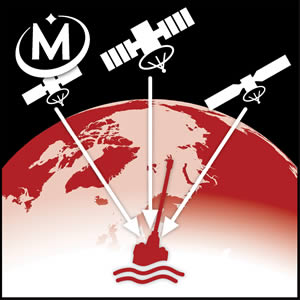
Who Uses An EPIRB?
EPIRBs are generally installed on marine vessels and are typically registered through the national search and rescue organisation to that specific boat. This registration allows faster confirmation of false alert and helps provide crucial planned travel details in emergencies. EPIRBs can either be operated automatically after an incident by fitting them to an auto-house which releases the EPIRB once submerged allowing the units water contacts to active the signal. EPIRBs can also be carried in ditch or emergency bags and activated manually in an emergency. Some vessels have a dedicated vessel EPIRB and a secondary crew EPIRB which goes into a lifeboat with the crew. In most countries EPIRBs are mandated to be used in all commercial shipping, fishing vessels and racing sailing vessels. However, they are also widely used on yachts, leisure boats and kayaks.
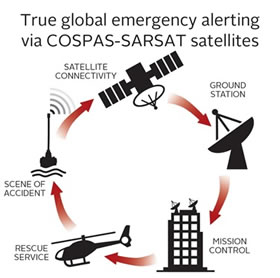
The differences between EPIRBs and PLBs
Personal Location Beacons work in exactly the same way as EPIRBs by sending a coded message on the 406 MHz distress frequency which is relayed via the Cospas-Sarsat global satellite system and utilising 121.5 MHz and Multi constellation GNSS to pinpoint location.
However, there are a number of differences between them. PLBs are designed to be carried on the person so they are much smaller. PLBs are designed to be used anywhere in the world, on the sea and also on land. Unlike EPIRBs not all PB’s float but may come with an additional flotational sleeve which they should be carried in.
PLBs, once activated, will transmit for a minimum of 24 hours and stored for 6 years; while the battery life on an EPIRB is typically ten years with at least double (a minimum of 48 hours) the transmission period.
An EPIRB is registered to a vessel, whereas a PLB is registered to a person. This means that if you are crewing a yacht and you switch to a new yacht the plb is still correctly registered; however, if you have an EPIRB and buy a new yacht you will need to re-register it when installing in your new boat.
Legally, unlike EPIRBs, PLB’s cannot by designed to be automatically activated. This is due to the fact they are more mobile and therefore more likely to be dropped or handled. An automatic activation feature on a smaller device would increase the likely hood of accidently activated, with the associated cost and risk to the search and rescue services. As PLB’s don’t have water activation switches they don’t have the magnetic collar used by EPIRBs to prevent accidental activation.
Finally, PLB’s have a three-stage activation process, this is again to prevent inadvertent activation.
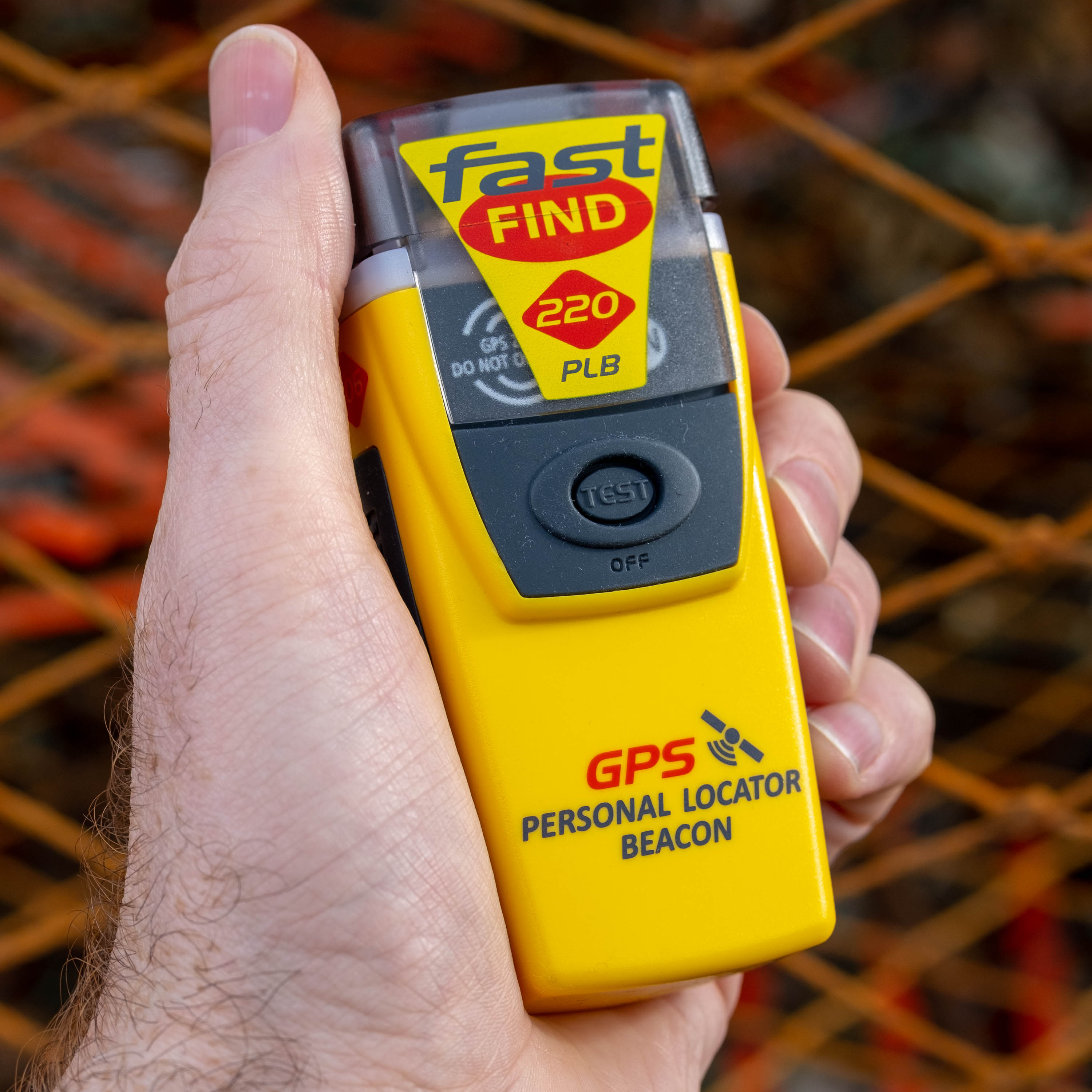
Auto or Manual EPIRB?
An EPIRB can be activated either manually or automatically when the EPIRB comes into contact with water which activates the units water switch.
Manual activation brackets will cover the water sensors, preventing them from activating the EPIRB if, for example, a wave breaks over the boat, and keeping it in a handy location should you need to access it quickly.
Auto float-free housing automatically deploy the EPIRB when submerged to a depth lower than 2 – 4 metres in the sea. They work by means of a Hydrostatic Release Unit which cuts the EPIRB free from its housing, causing it to activate. The EPIRB can also be removed from the auto housing to be activated manually by removing the manual bracket and placing in water or simply by pressing the power button.
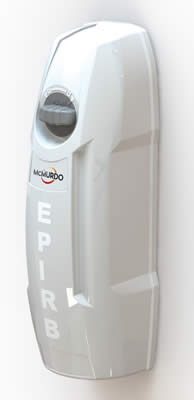
How many people have been rescued?
Since the Copsas-Sarsat organisation was set up in 1981 over 43,000 people have been rescued. As the EPIRBs become more sophisticated with multiple sources if GNSS, the GNSS is modernised with the launch of Galileo and localised rescue capabilities are included via AIS, the core impact is an accelerated rescue and hopefully even more rescues in the future.
2020 will see the start of the next revolution in safety with the activation of Return Link capabilities via Galileo satellites in the Cospas Sarsat ecosystem. This will, for the first time, allow signals to be sent back to the beacon to confirm that help is on it’s way.
How do I register my EPIRB?
Once you have purchased your EPIRB you need to register it in your country. You need to provide contact information plus information about the vessel it is to be used on. This is vitally important because if the EPIRB is activated the search authorities in your country will try to make contact with you or other people you have listed to enable them to see if a rescue is required.
In the UK you need to register with the Maritime and Coastguard Agency, in the USA registration is through NOAA (National Oceanic and Atmospheric Administration).
For more information about where and how to register your EPIRB please contact your local supplier.